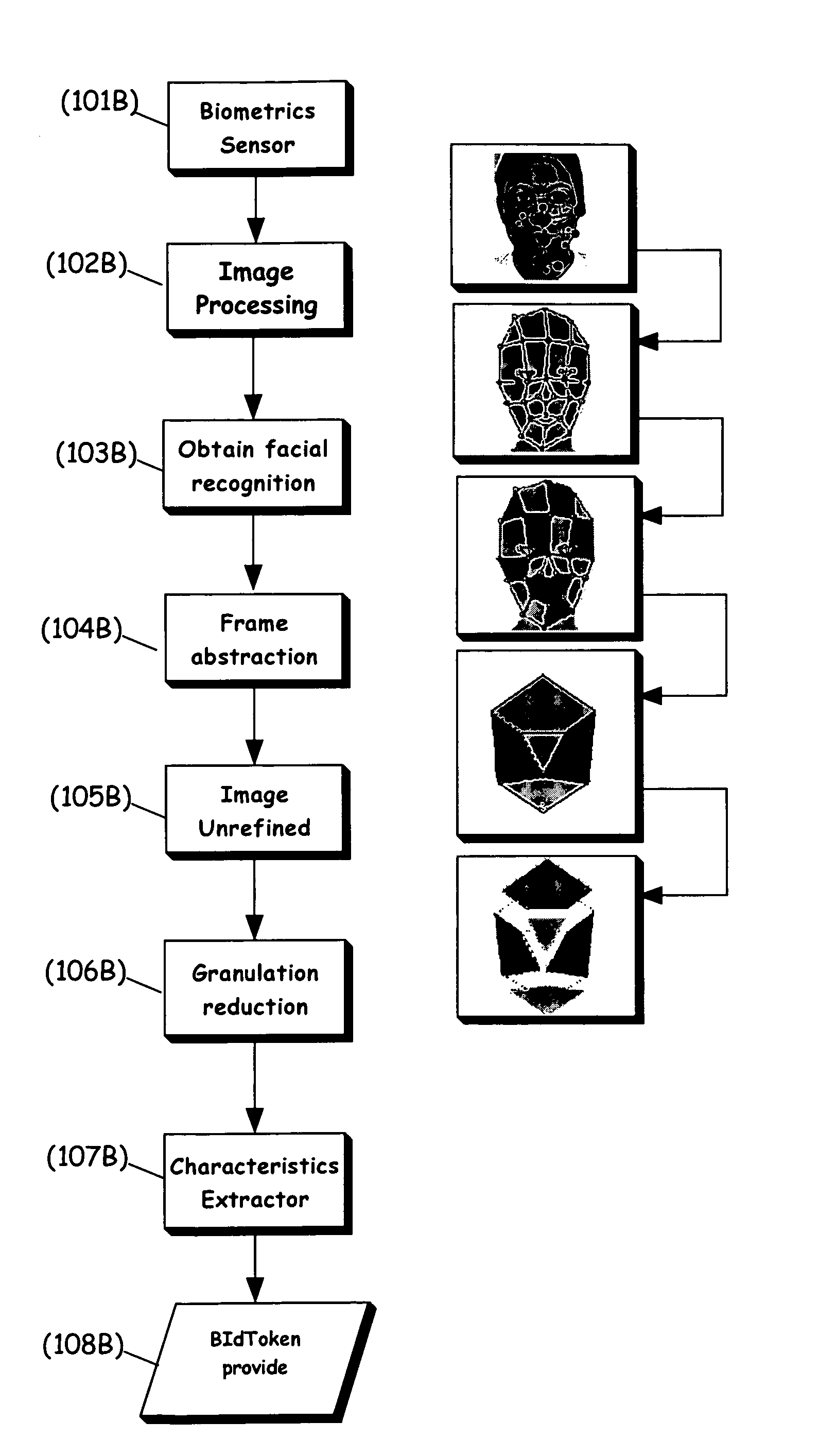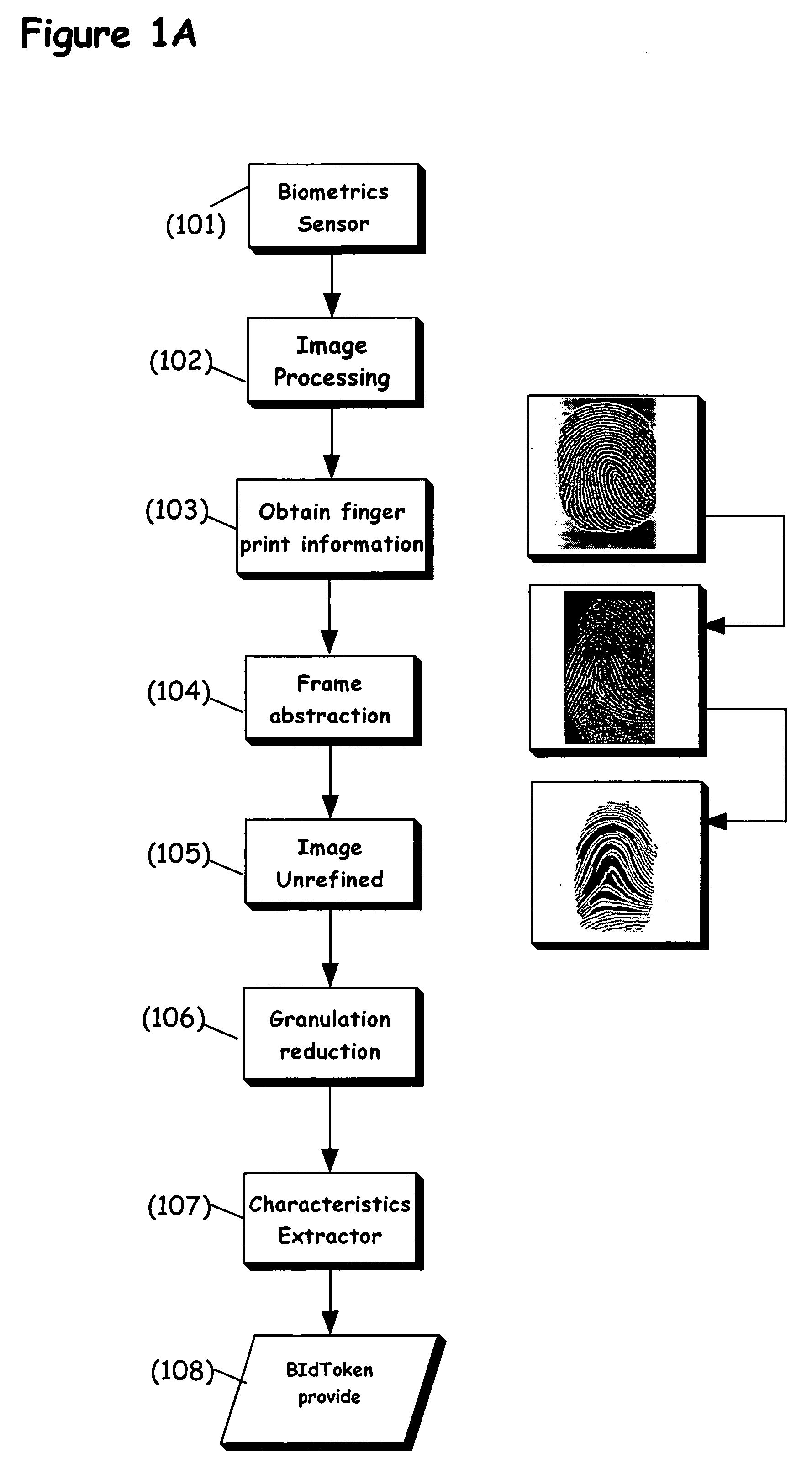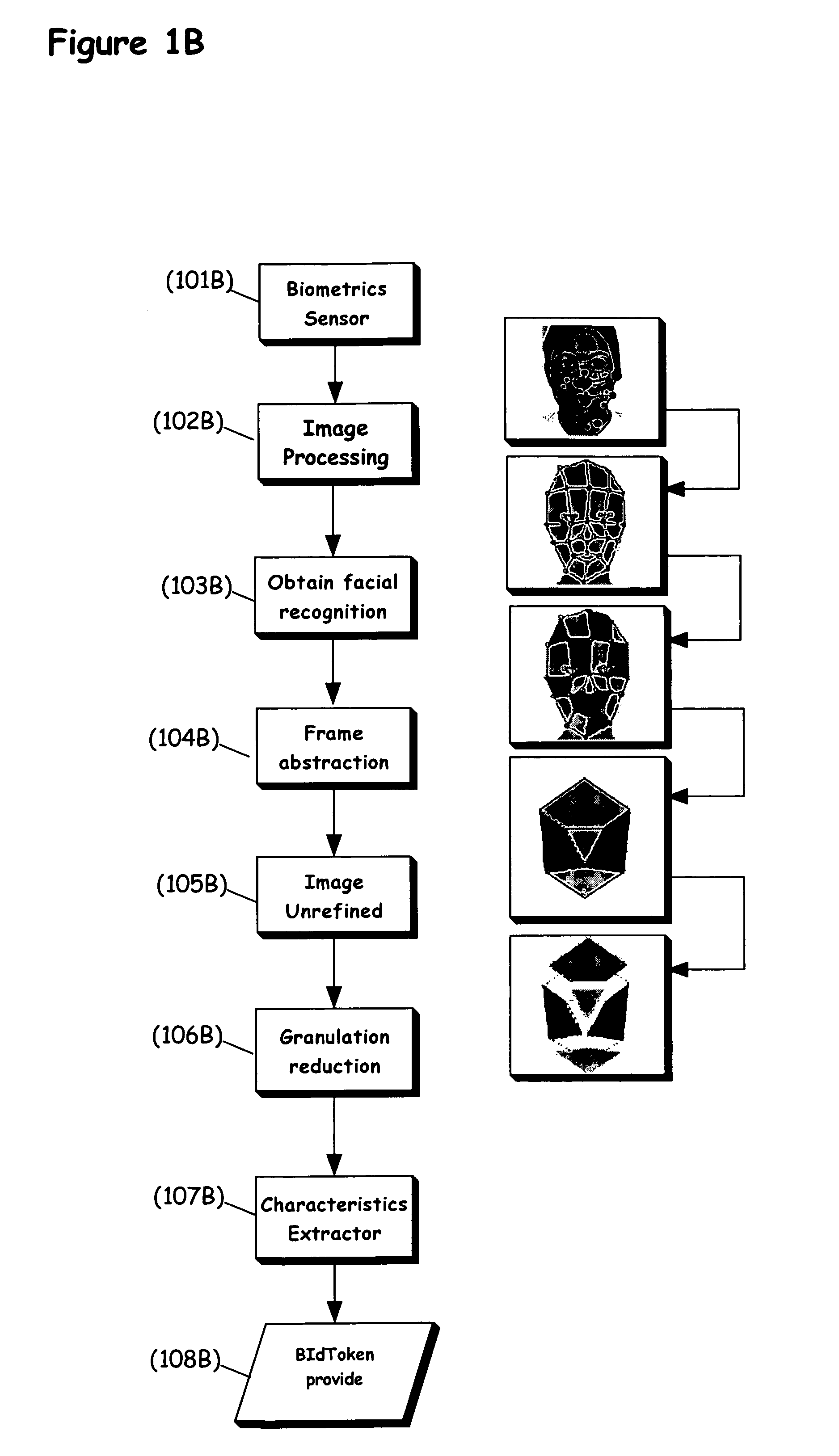System and method for traceless biometric identification
a biometric identification and traceless technology, applied in the field of traceless biometric identification, can solve the problems of background art also not teaching or suggesting a system, device or method, and achieve the effect of sacrificing the security of the overall biometric surveyed process and increasing the chance of spoofing
- Summary
- Abstract
- Description
- Claims
- Application Information
AI Technical Summary
Benefits of technology
Problems solved by technology
Method used
Image
Examples
Embodiment Construction
[0081]The present invention is of a system and a method for identifying a user according to a non-unique biometric identifier, which is preferably an incomplete biometric identifier. It is incomplete in the sense that preferably it is not possible to re-access or determine the original biometric information through a reverse algorithm due to the loss of information during the creation of the non-unique biometric identifier, as referred to herein as a BIdToken or as a non-unique token. The BIdToken may optionally and preferably be implemented as a number or numeric string with sufficiently few digits that it may not itself be unique for the population of individuals from which such information is being collected. It may also optionally be implemented as a string of symbols. Of course, it is understood that that the BIdToken may be unique with a population, as there may not be another such BIdToken, such that the present invention preferably operates according to statistical likelihoo...
PUM
 Login to View More
Login to View More Abstract
Description
Claims
Application Information
 Login to View More
Login to View More - R&D
- Intellectual Property
- Life Sciences
- Materials
- Tech Scout
- Unparalleled Data Quality
- Higher Quality Content
- 60% Fewer Hallucinations
Browse by: Latest US Patents, China's latest patents, Technical Efficacy Thesaurus, Application Domain, Technology Topic, Popular Technical Reports.
© 2025 PatSnap. All rights reserved.Legal|Privacy policy|Modern Slavery Act Transparency Statement|Sitemap|About US| Contact US: help@patsnap.com



